Cycling Southern Mexico – Tabasco and Campeche by bike
Country: Mexico
From Córdoba to Escárcega
Lesson learned: If you drink five liters and sweat six liters you never need to pee
Most wonderful miracle: 3000 year old Olmec heads
Animals we saw: cicadas, butterflies, frogs, snakes, colorful birds, iguanas, dragonflies, salamanders, geckos, mosquitos, bugs, dolphins, pelicans, seagulls
Days on the bike: 6
Kilometers cycled: 555
Average kilometers per day: 92.5
Total kilometers cycled: 29.602
Cycling Southern Mexico
Missed the last entry? Here it comes: The highest point in five years – Cycling the Central Mexican mountains
Blog auf Deutsch: Der heiße Süden Mexikos – Tabasco und Campeche mit dem Rad
We hadn’t seen much of Córdoba, so we decided that despite the time pressure it was time for a rest day. Veracruz is the state where most coffee is harvested, so of course we visited the brand new coffee museum and learned a lot. More about the museum in Roberto’s spanish post El museo que celebra al café en Veracruz. We were the only ones to join the free city tour and in the afternoon we only managed to drag ourselves back home into bed. We were so exhausted. The climb over the mountains had been tough and our legs hurt for two days.
The alarm woke us up early next morning but somehow everything went slow. Roberto hadn’t slept very well for two nights. He didn’t have a very good feeling concerning the route through Veracruz. The highway would lead us through some towns that we had been told were dangerous for there were many Zetas, while we had heard of armed robbery on the freeway.
If it’s one thing we have learned to do, then it’s doing a proper research with locals and other bike travelers. More often than not, news were simply exaggerated. So we chatted with some people. None of them had ever had dangerous experiences in Veracruz, but some said they had not felt completely safe either. Years ago Roberto and I had decided to follow our guts concerning things, situations, places and people we had a bad feeling about, no matter if there was any evidence or an actual reason for it. We made the decision to take a bus for the next 300 kilometers and Roberto sighed with relief.
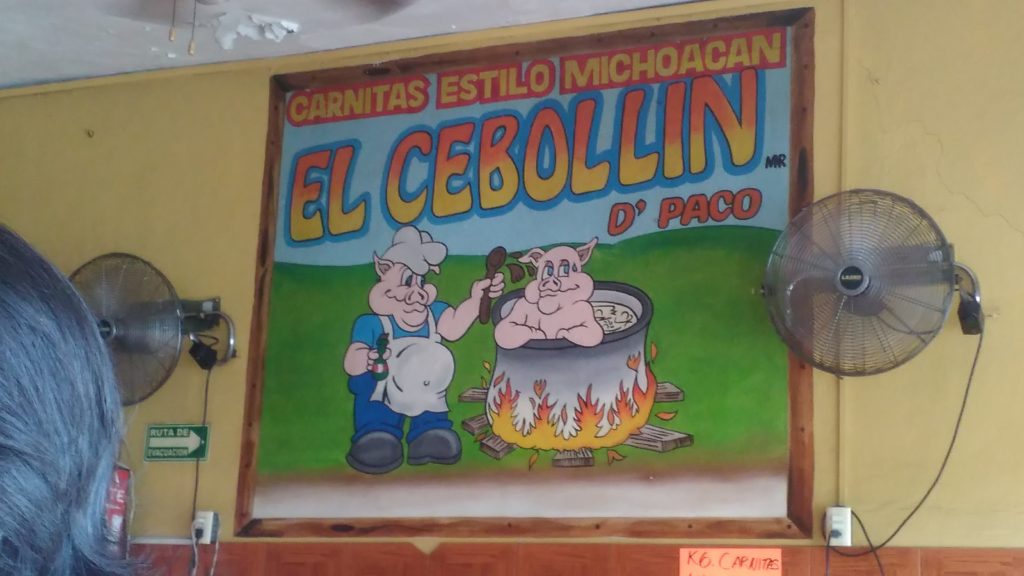
I never understood why the Mexicans love to advertise their meat dishes with paintings of happy animals being roasted, boiled or eaten. It’s a paradox, but I see it all the time.
We bought the very last two bus tickets and a couple of hours later reached Coatzacoalcos. It was a real hot afternoon. We stayed in the cheapest place we could find. It was just around the corner from the harbor with its dark bars with cardboard in the window so you can’t see what’s going on inside. We walked through town and then rather got ourselves a beer for the room.
Next morning we made our way to Villahermosa, and finally the way was flat as a pancake. As soon as we left town we found ourselves surrounded by petroleum pumps. Remember those futuristic drawings they made about the year 2000? They were all full of factory halls, chimneys and industrial buildings made of concrete? Well, it felt a bit like we had landed inside one of those drawings.
After a while we left the industrial area and continued surrounded by nature, banana plantations, high grass and many trees. We had to concentrate a lot on the road if we didn’t want to kill all the frogs, toads and snakes on the road. The trees were full of cicadas, the bigger the tree, the louder their sound. Plenty of colorful birds and butterflies kept us in a constant good mood.
There we were riding at a good speed when somebody shouted “Hey, heeeey!”. It was Don Daniel, who lived here and spontaneously invited us to spend the night with him and his wife Doña Fernanda. “So I guess you must be from Gringolandia”, he said to me. Then he turned around to Roberto. “And you? Are you Japanese?“. I couldn’t keep refrain from laughing. All over Asia people thought, Roberto was a local, even though he didn’t speak the language. And here in Mexico they thought he was a foreigner. It wasn’t the first time they guessed he was Japanese, but usually it’s when he is taking pictures.
Don Daniel and his wife Frau Doña Fernanda lived in a comfy house about 13 kilometers outside the town of Cárdenas. “The town is too dangerous for us, we prefer the calm countryside”, they said. Finding a calm spot right next to the motorway isn’t an easy task, but they made it just that. The trees and plants in their garden were full of mangos, bananas, passion fruit and coconuts. We spent the night in an empty building next to their house, where we could even take a shower. As Don Daniel told us later, we were the third cyclists they invited over after a roadside chat.
It was another easy and fast 70 kilometers to Villahermosa where we would meet Tere and Gaby. Once we reached town, people gave us “helpful tips” on how to stay safe in town. “Never ever leave your bikes unattended”, they said. “They won’t only steal your bikes, but also the panniers. They crack open the cars on the parking lots all the time too. And also take good care for your ‘güerrita’ (blondie), or they’ll steal her too”, they said to Roberto. “Well I wouldn’t bike here, it’s far too dangerous. People drive like crazy, they don’t give a shit for you cyclists. And if you don’t end up in a road accident you’ll probably be assaulted.”
Being asked whether they had actually ever experienced an assault, people shook their heads. “But you hear about that kind of stuff all the time. Don’t trust anybody!”
That’s exactly where we see the problem. Villahermosa was a nice town, but people didn’t trust each other, they don’t help each other either. You never know if it’s a trap.
Of course you think twice about talking to a stranger. Unless it’s a white foreigner, then they must be warned of all the other bad guys, everyone else here, except the person you’re talking to. And in between all that suspicion there’s not much space for positive thoughts. This was the town with the crankiest people. Crossing a pedestrian’s bridge we were even yelled at once. Reminded me on cycling on a footpath back in Bremen, Germany.
Tere and Gaby were different though. They were curious and helpful people, fond of traveling and generally interested in people and their stories. Of course I don’t say we should all go through life being all naïve, but you can keep your eyes open without mistrusting everybody, just as Gaby and Tere are the best example. They also organized for us to use the Mukul-Ja, a place for art and culture, for one of our presentations. We set the focus on how helpful people have been everywhere and that we had not once been mugged, not even here. You just need a little trust in humankind.
Next day we went for a walk through one of the more difficult parts of town, in between the market and red-light district, because that was where they sold bike parts. People were nice, friendly and showed us the way. Sure, this wasn’t quite the place to show off the newest smartphone and walk the darkest alleys, but with common sense it certainly didn’t feel like a dangerous place.
We got our tire and walked to the town’s most famous museum: the archeological site “La Venta”. This was where some of the huge stone heads from the Olmecs were kept. The Olmecs were one of the oldest cultures of Mexico and had reached today’s state of Tabasco back in 1300 BC. The heads were so huge, they weighed 20-60 tons each. The open air museum was built right into a forest. The sculptures, altars, heads and mosaics from the years 1300-200 BC were connected by a one kilometer long path through the trees. It was absolutely impressive.
The museum was connected with a zoo, where we could see animals from the region. I had never been so close to a jaguar before. We had long made our peace with Villahermosa.
It was one more day of biking Tabasco, before we entered Campeche. The only thing we could complain about was the heat. People were nice, the landscape was pretty and the traffic little. There were less banana plantations now and more flat marshy landscape with reed, herons, turtles, frogs, and most of all iguanas.
Tere and Gaby had told us that sometimes on the cheapest food stalls, they sold iguana meat for chicken. I wish I hadn’t known that. We often go with the cheapest option. Then again in China, Cambodia, Uzbekistan and Laos we usually didn’t know what we were eating either. As long as it tasted good and wasn’t a protected animal we were fine. Anyways I had been craving a lot of vegetables lately and I stuck to them.
For Roberto the state of Campeche had always been a synonym for tranquility, laughter, sunshine, serenity and trust. A bit like a little Laos inside Mexico.
We bought a liter of Agua de Fruta for Roberto and a liter of coconut milk for me. Two young men sold them on the roadside for 15 pesos each. On the neighboring stand we got some rambutan. It was so hot that we stopped at every single drink stand, and there were plenty.
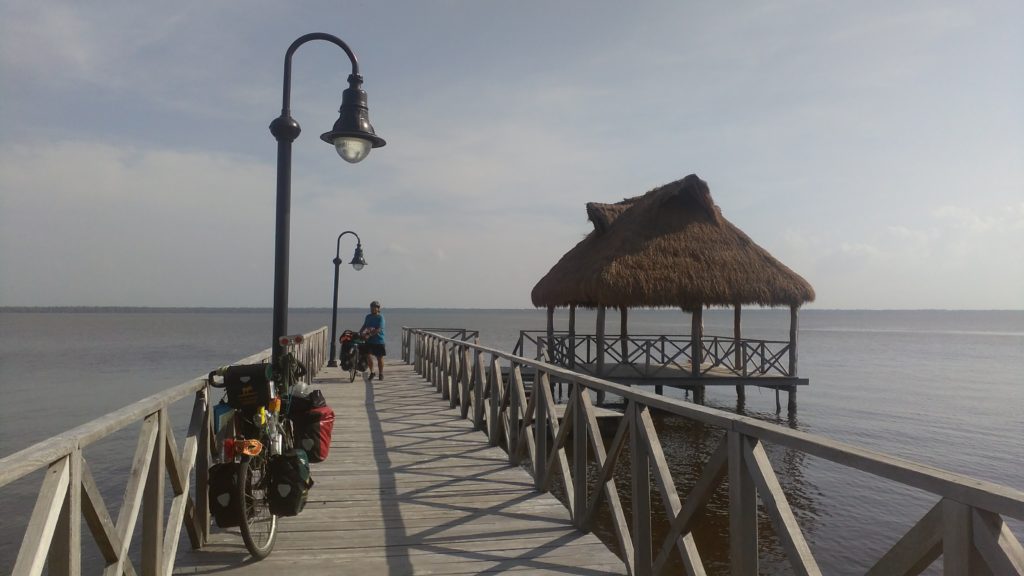
A little lunch break with a view on the public jetty by the Laguna de terminos, Mexico’s biggest lagoon.
I never managed to count the liters I drank every day, but I know it was an absurdly high number. For all the heat I had hung my little towel on the handlebar, so I could wipe away the sweat from my face before it mixed with sun cream and dust and dropped into my eyes. My face burnt every evening of all the wiping.
We crossed one of the country’s longest bridge (the Zacatal bridge, 4 Kilometers) into the island Carmen. Down in the water I saw a happy dolphin jump out of the water.
In Ciudad del Carmen we stayed with Isadora, who had opened her warmshowers profile only three days before our arrival. Isa grew up in Mexico City and has lived in many different parts of the country.
She loves new challenges and at the age of 34 her newest goal is to live on one of the oil platforms. That way she could work for 14 days and then have another 14 days off for travel. There were platforms enough all around Ciudad del Carmen. They were visible from the town’s beach. That’s why the swimming isn’t quite as much fun as further east or west.
We took a shower and drank a cold beer before we hit the hay. Tonight we slept so good that it was far too late when we finally woke up. The fresher morning hours had passed and it was broiling outside. We had to get going nevertheless. My towel was wet in no time. Outside the city we stopped at a beach. We had a liter of fresh lemonade each and I swam a few rounds in the sea. The water felt less refreshing, probably some 40°C, but when I continued biking in my soaking cotton clothes, the wind kept me cool.
We crossed another bridge in the afternoon, crossing from the island of Carmen to the Isla Aguada. This was where we met Edgar and Angela who introduced us to the island’s history. Turns out that both the Isla Aguada as well as the Laguna de Términos that was situated between the island and the mainland (the country’s biggest lagoon by the way), were home for pirates many years ago. Only when the both towns Ciudad del Carmen and Isla Aguada were built, it was possible to get rid of them.
We went for a walk along the beach before we hit the sleeping pad. Tonight it was so hot that we decided to camp without the tent, so we could let some wind in. And finally at night the rain went down in big drops. Fine for us, we had a roof over our heads and were in need of some fresh air.
I woke up all swollen, even though I had reapplied the mosquito repellent several times in the night. My face and body had been the playground for the island’s mosquitos tonight. Looks like we’ll have to stick to camping inside the tent after all. Today we started earlier than usual and – voila – despite the usual headwinds, the first 40 kilometers were done in no time. We had a break at the last beach on the Gulf of Mexico. Next swim stop will be the Caribbean.
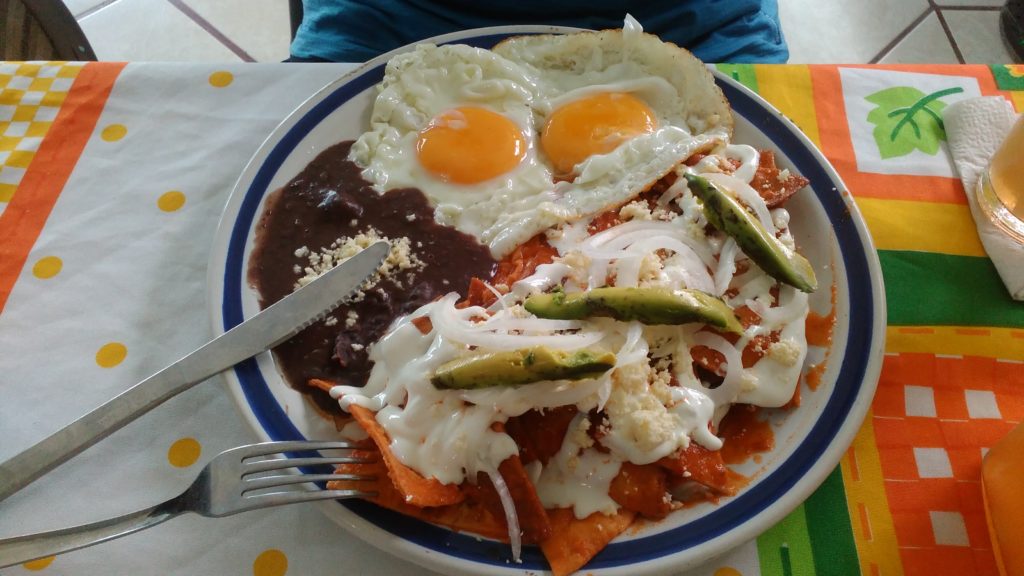
All vegetarian Mexican dish. “Chilaquiles” is a typical hangover breakfast. But you can also eat it with no hangover. Or as dinner. It is a but heavy I have to admit. Although perfect as a cyclist’s breakfast!
After a short break and a dip in the sea we crossed six short bridges that led us back to the mainland. The lagoon was said to be home for crocodiles, but we were lucky enough not to see any. On the other side of the lagoon we entered the rural Campeche. Roberto told me that in the old days nobody ever bothered closing their front doors here. Tere from Villahermosa had told me similar things about her childhood in the neighboring Tabasco. Everybody spent the day at everybody else’s place and the kids only returned to their homes for dinner.
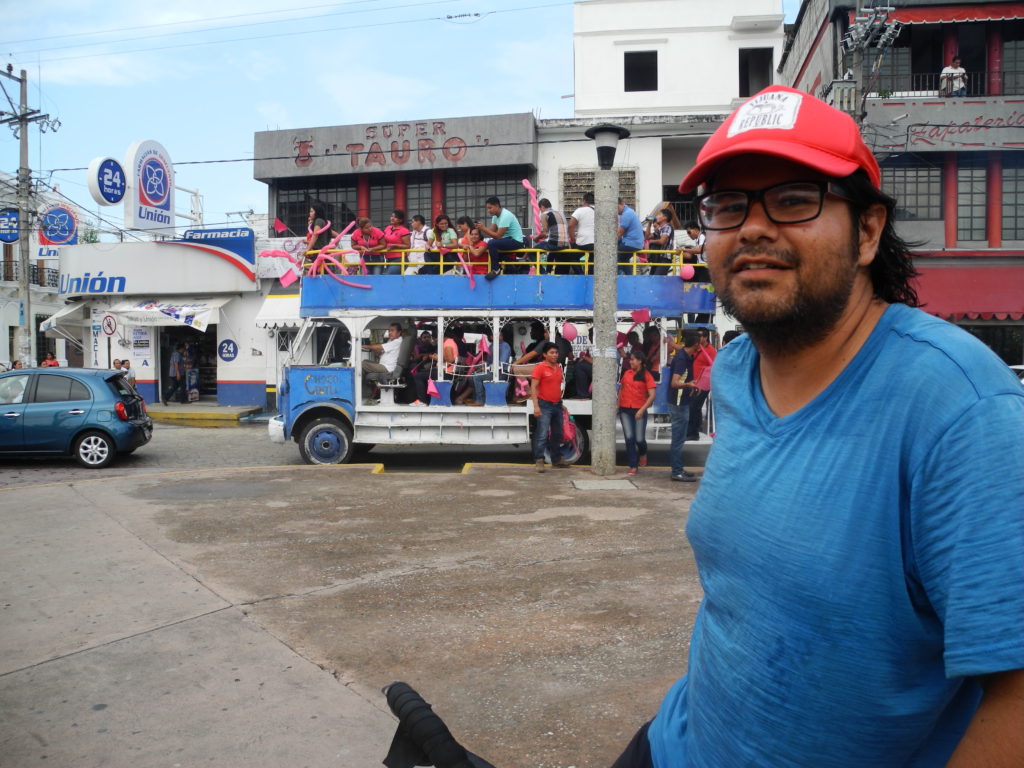
There was a beauty contest going on in the center of the little town “Frontera”, Tabasco. The main Plaza was full of cars, transporters and people who supported their favorite.
There were swamps to both sides of the road and we enjoyed the wide and relatively flat road with very little cars. The only traffic was a few minivans, the rural public transport that connected the villages with each other. The sky turned darker and darker. A thunderstorm was on its way, it was dry as dust though. A bright lightning stroke very close to us. Not a second later the ear deafening thunder nearly scared me to death. I have to admit that I have a bit of an easy startle response, but this was horrendously loud.
This was crazy. We biked as fast as we could, until we saw a village. There was a shop, so we threw the bikes on the ground and ran for shelter. There hadn’t been a second lightening that close, so owner Lupita was rather confused to see us running for our lives without any thread behind us. We explained and she said we did well to be alarmed. Many people here are far too casual about the thunderstorms, probably because they happened so frequently. Only last year a boy from a neighboring village had been hit by struck by lightning playing outside. We stayed for some 20 minutes, until there were more than ten seconds between the lightning and the thunder.
We were heading southeast and the thunderstorm headed northwest. Finally the rain began. My shorts had just dried from the bath in the sea. It was another 40 kilometers to go to Escárcega, and it was going to be dark soon, so we better got going fast. The last ten kilometers felt like an eternity, but eventually we reached Escárcega, “The entrance door to the world of the Mayas”.
It was Sunday and the Chinese restaurant was closed. So we’ll leave our cravings for another day. Roberto got us a burger and a “caguama” (1-liter bottle of beer) each. We sat down with saddle-sore butts, salty hair and sandy legs, listened to some music and enjoyed our evening after a 125 kilometer day.
We had made it to the entrance door. Now we were ready for the 273 kilometer’s ride through the jungle with plenty of archeological Maya sites. We hoped for some friendly monkeys and no jaguar roaring while camping.Read about our ride through the jungle in our next entry: Maya ruins and rain forest – Yucatán by bike

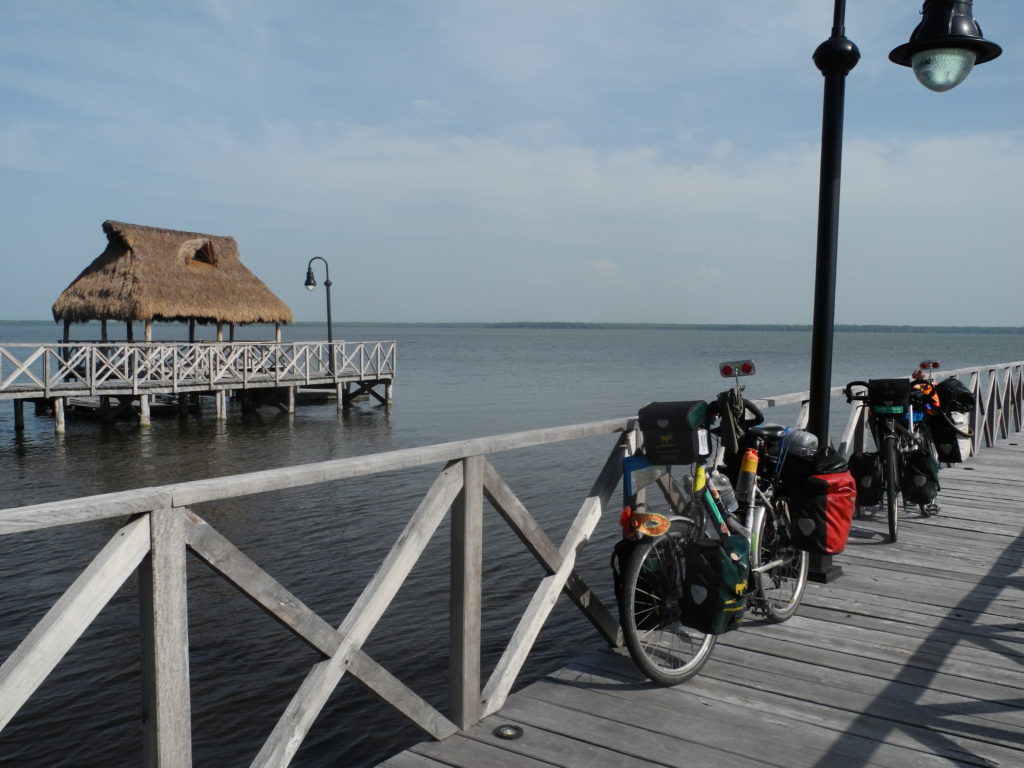
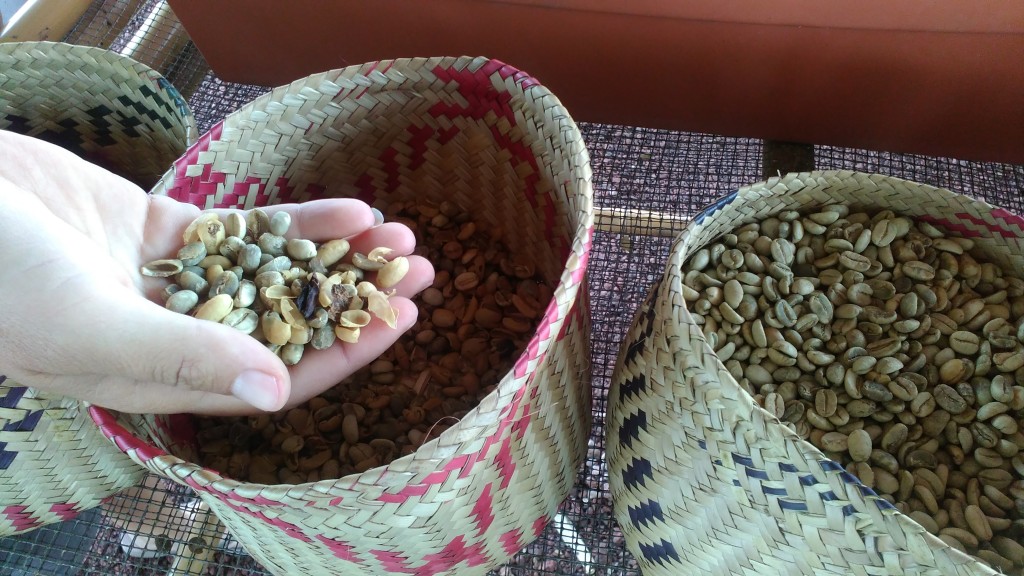
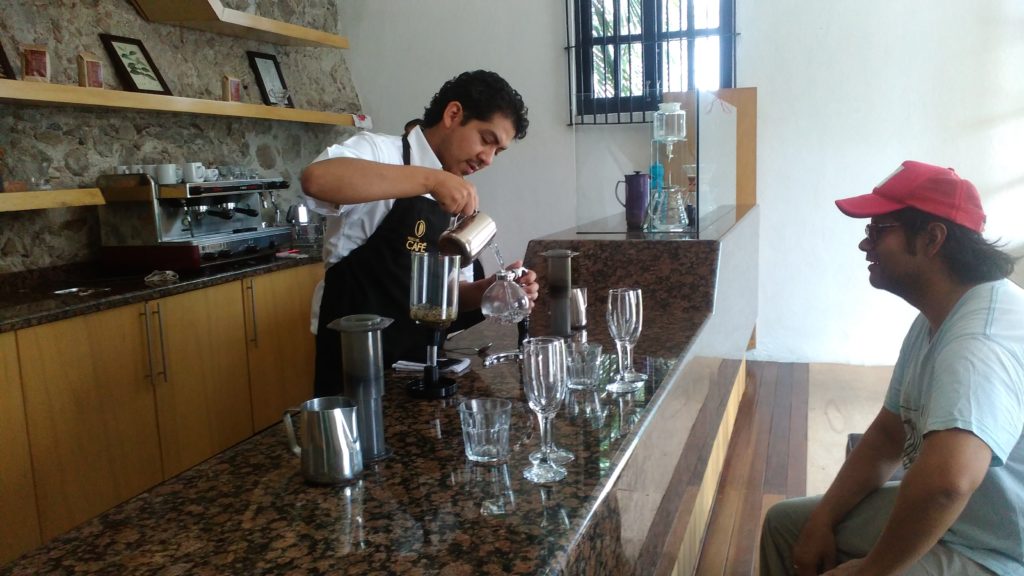
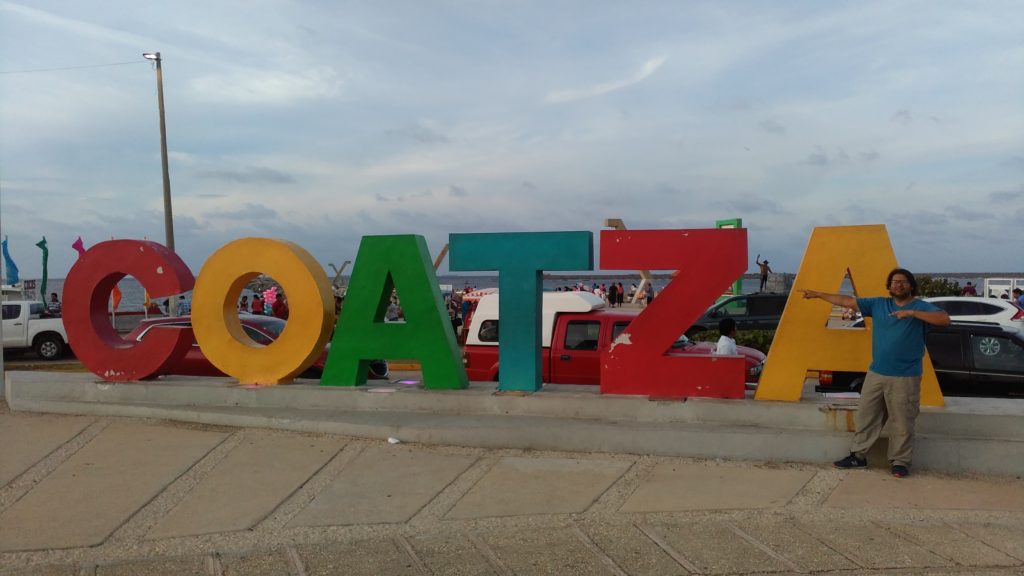
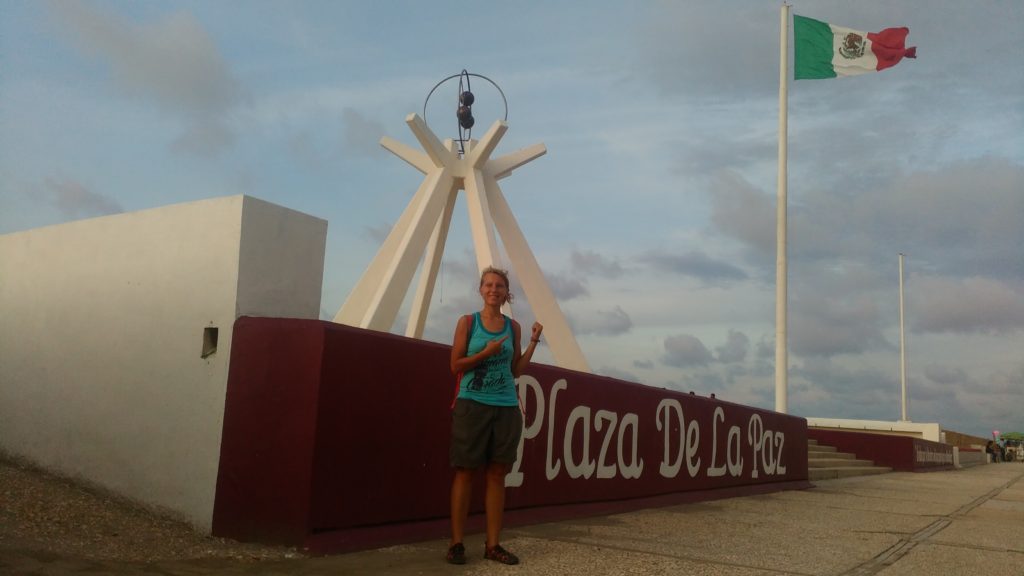
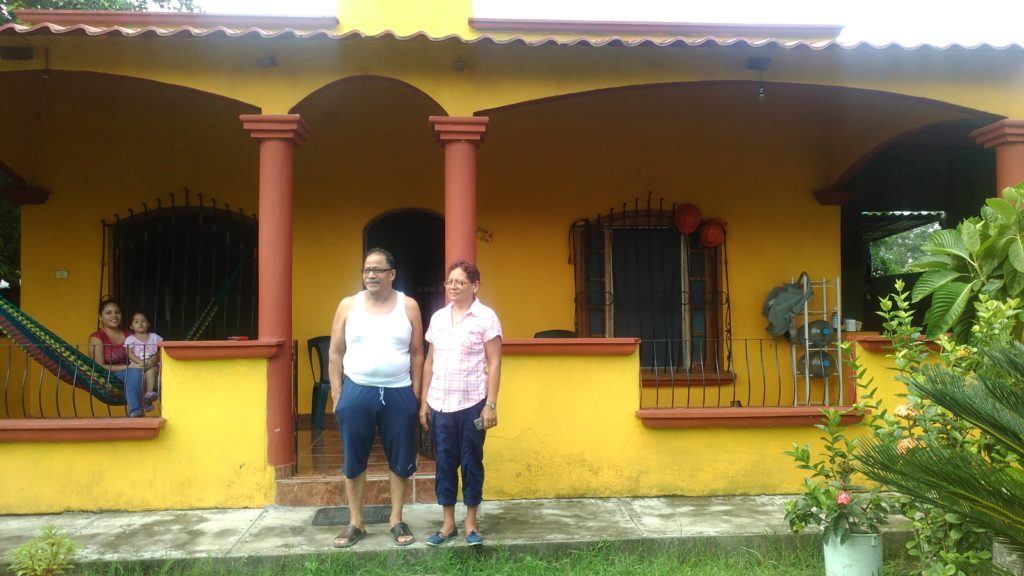
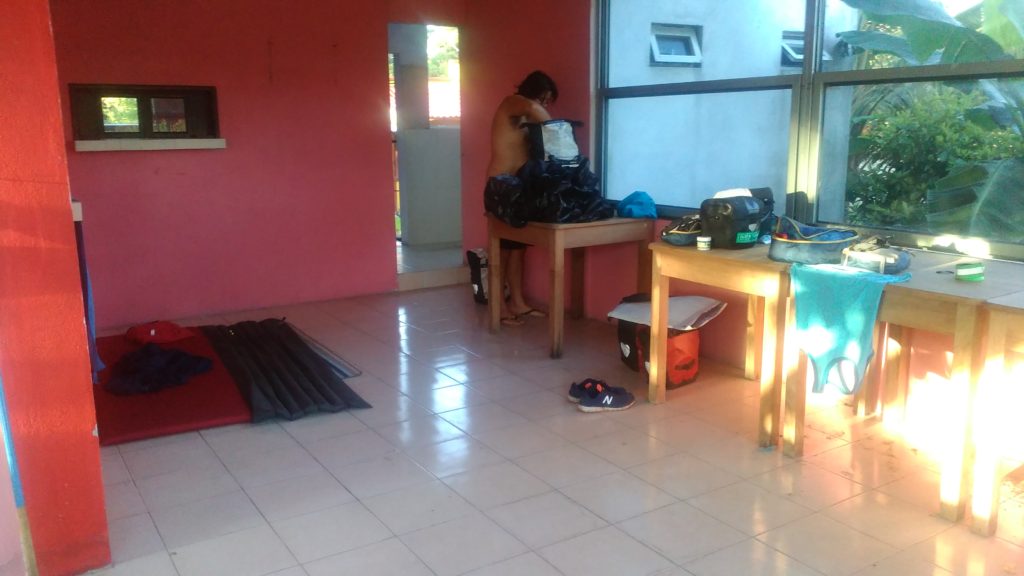
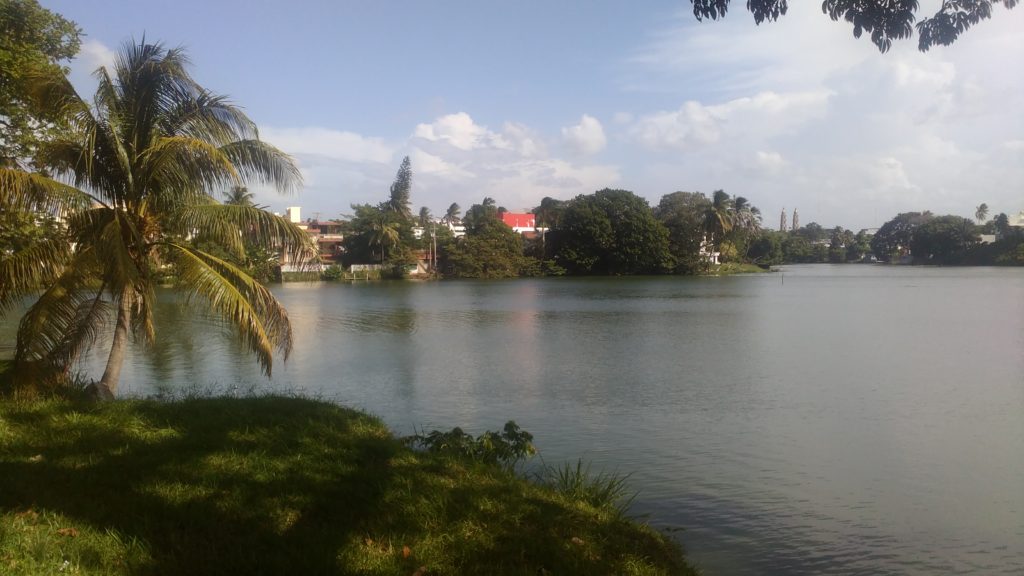
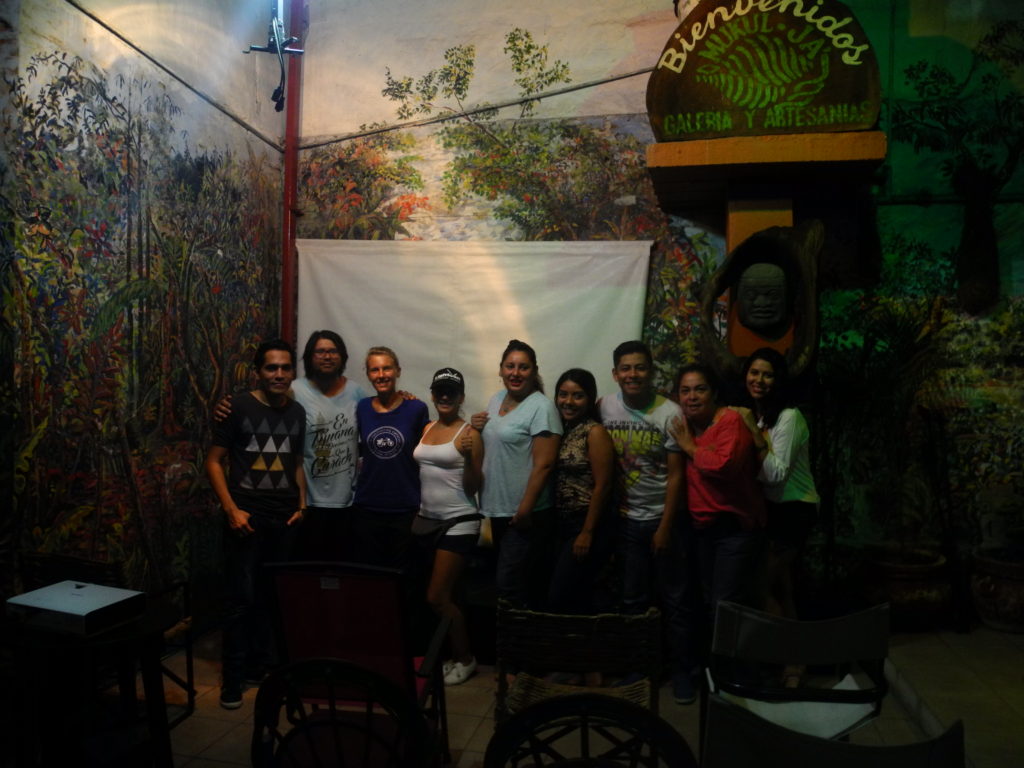
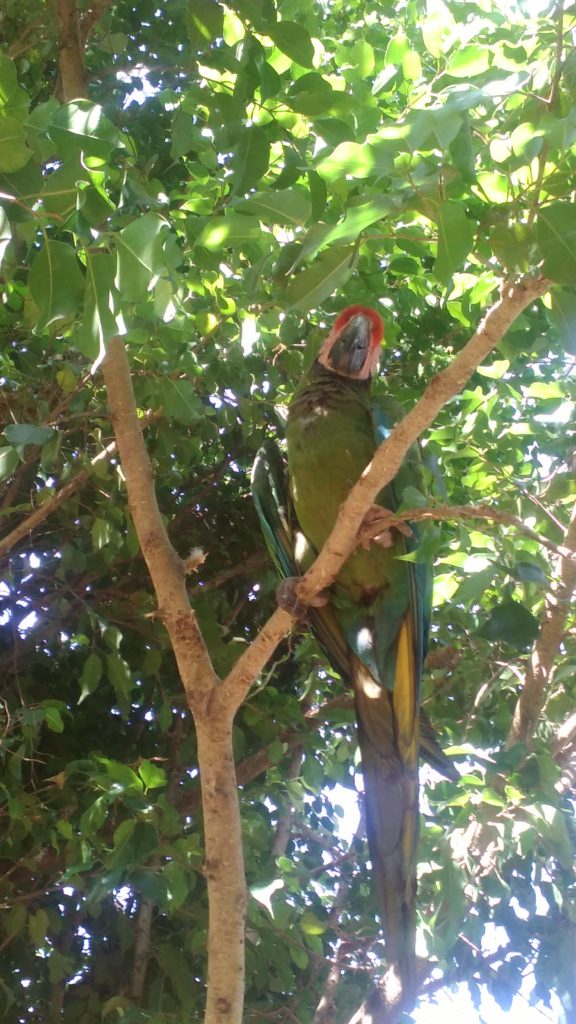
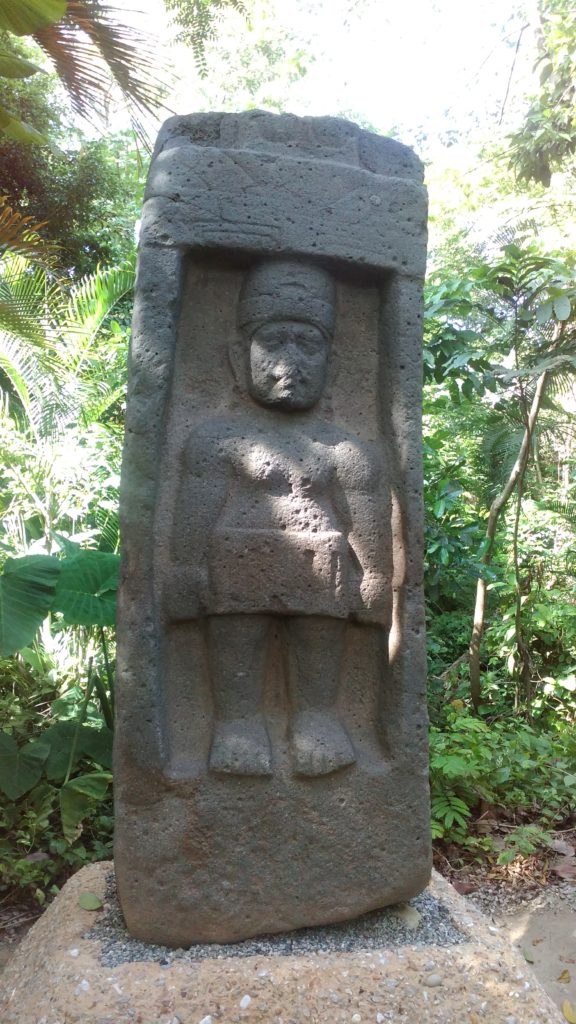
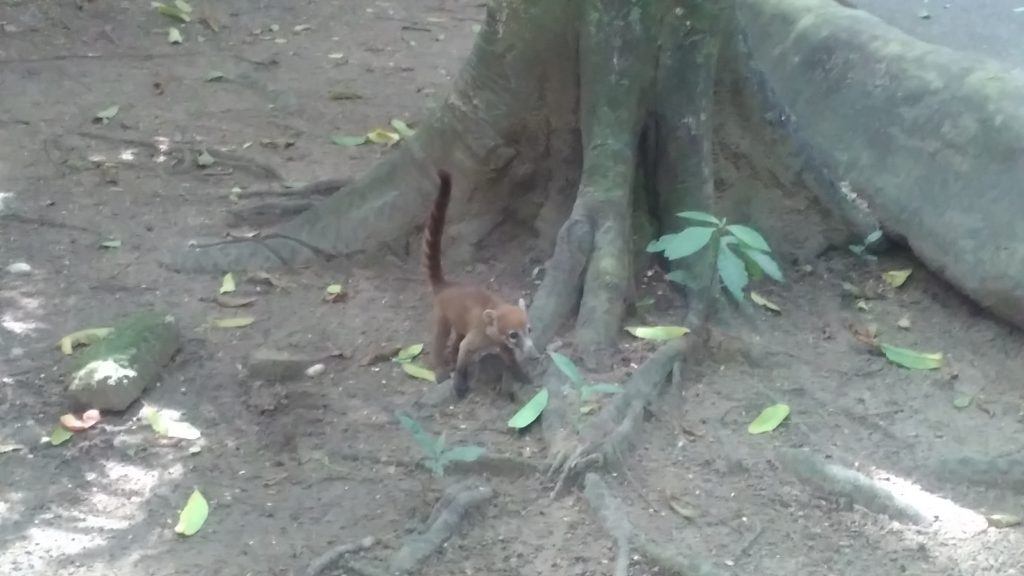
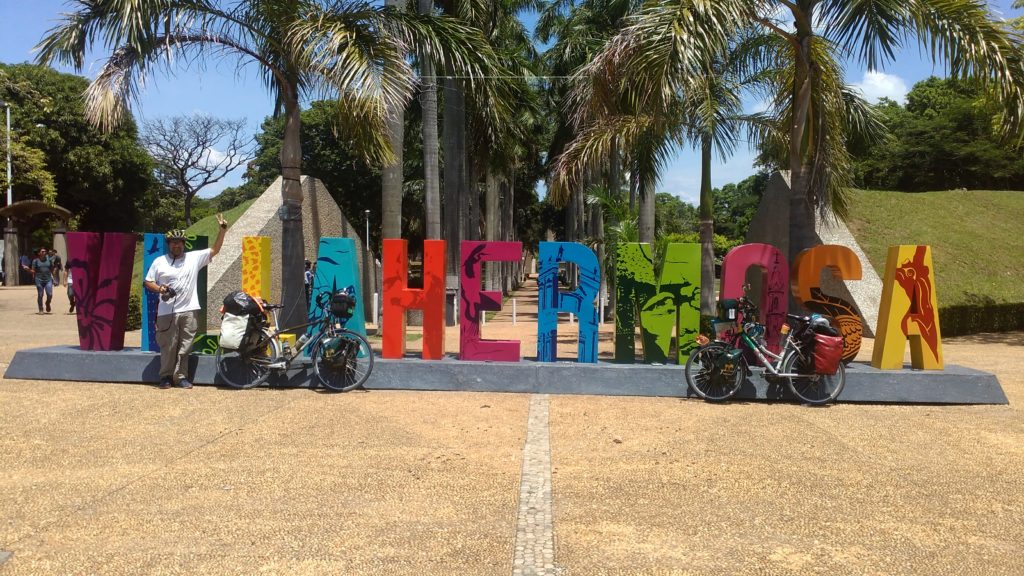
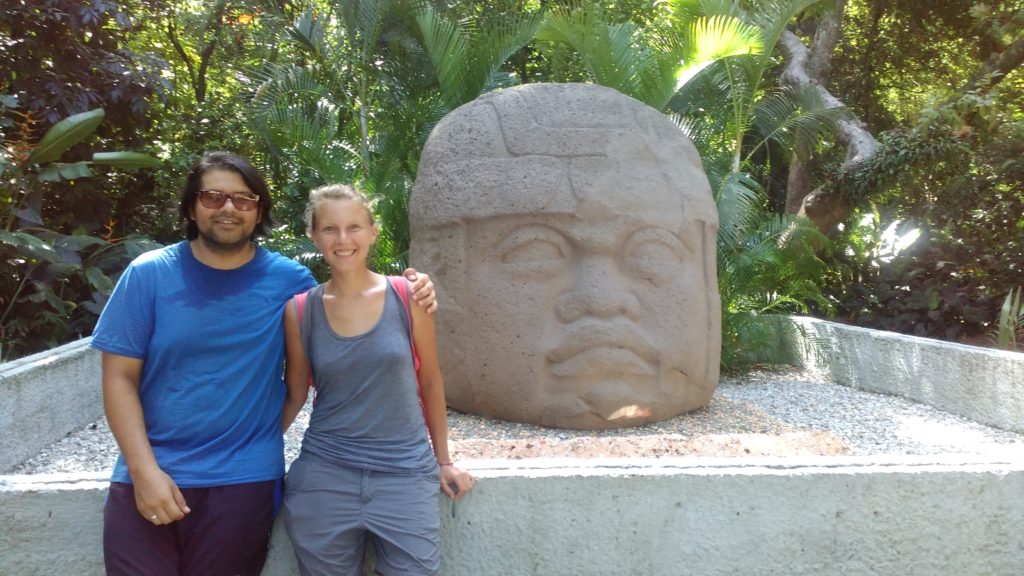
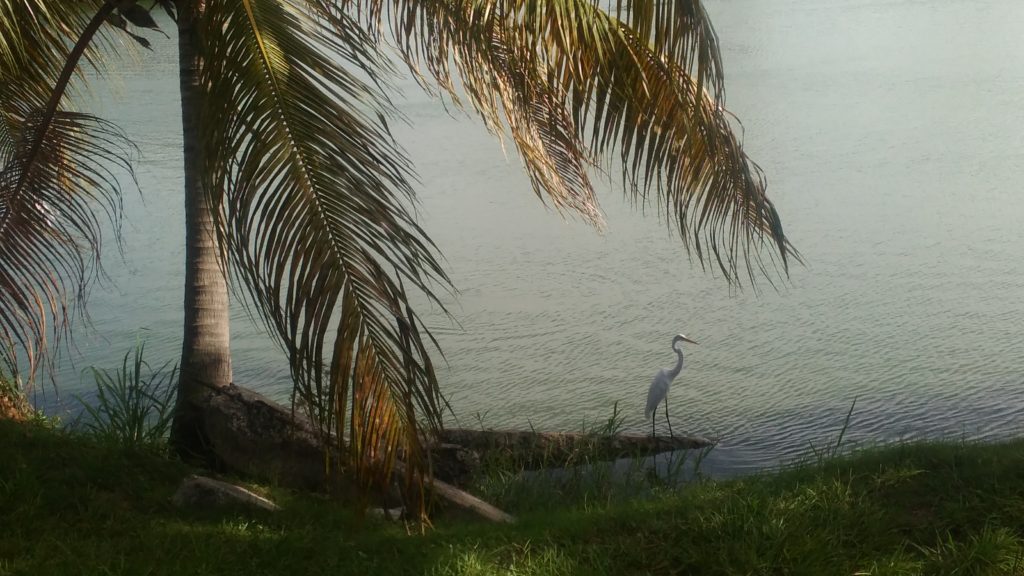
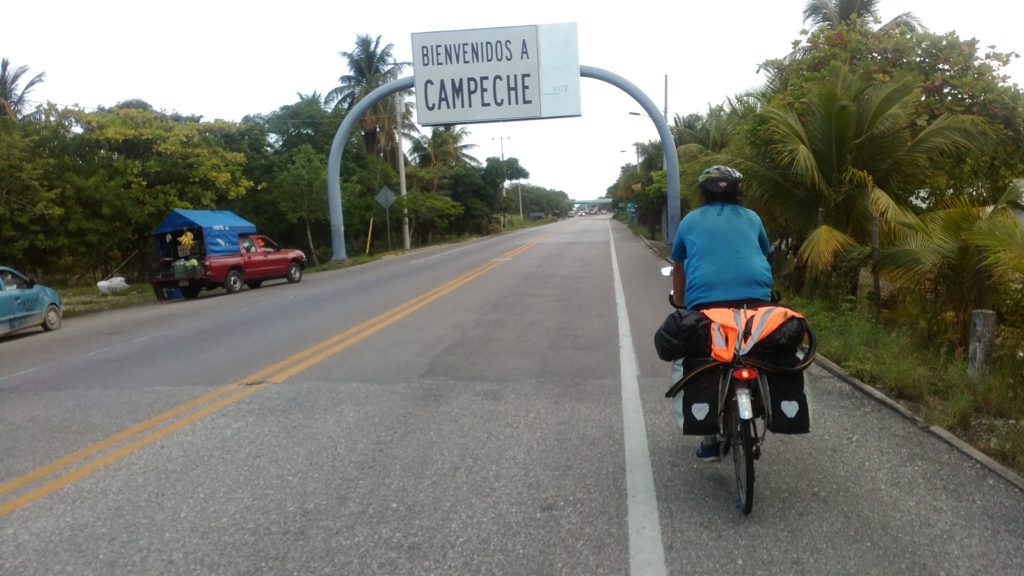
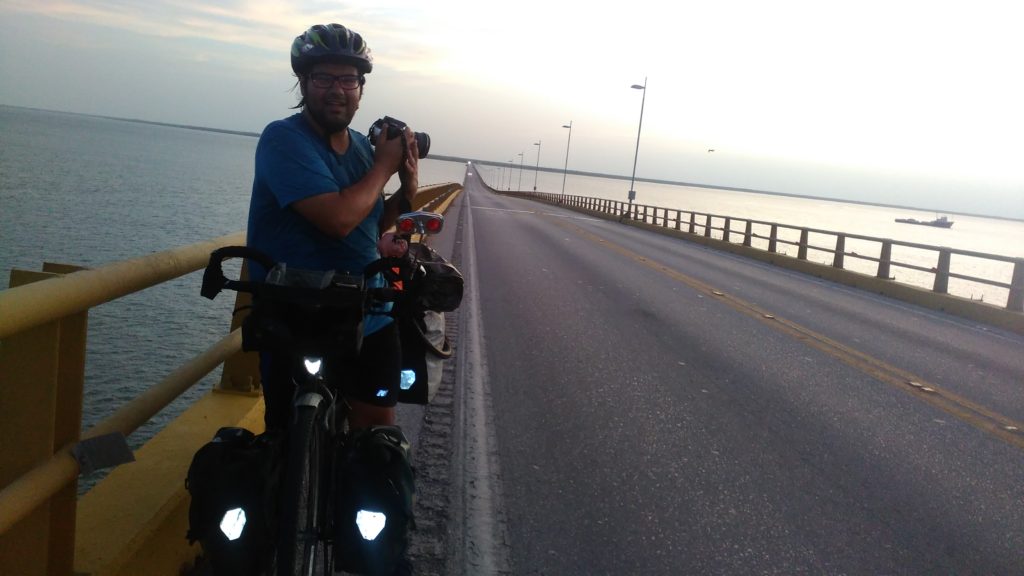
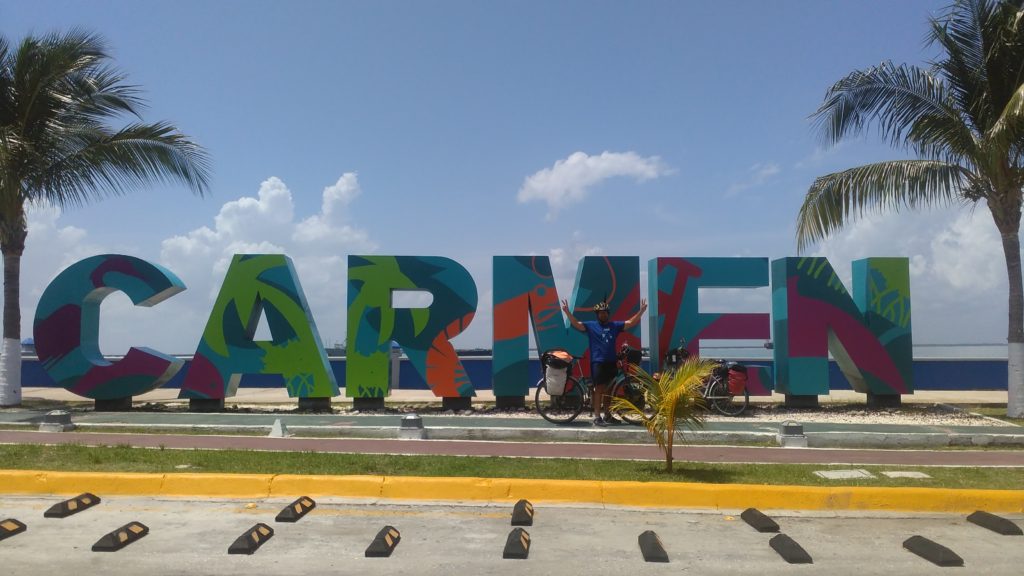
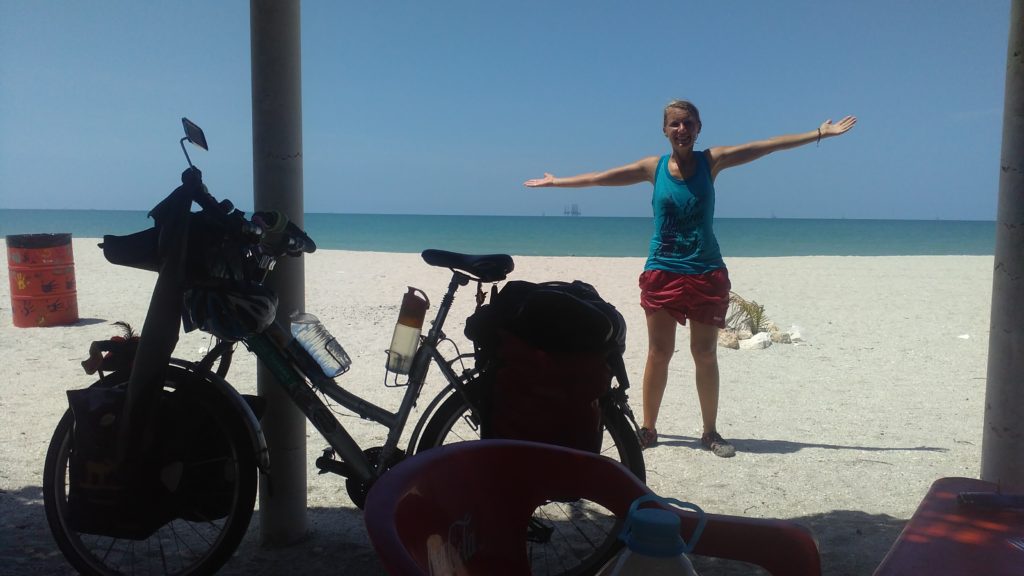

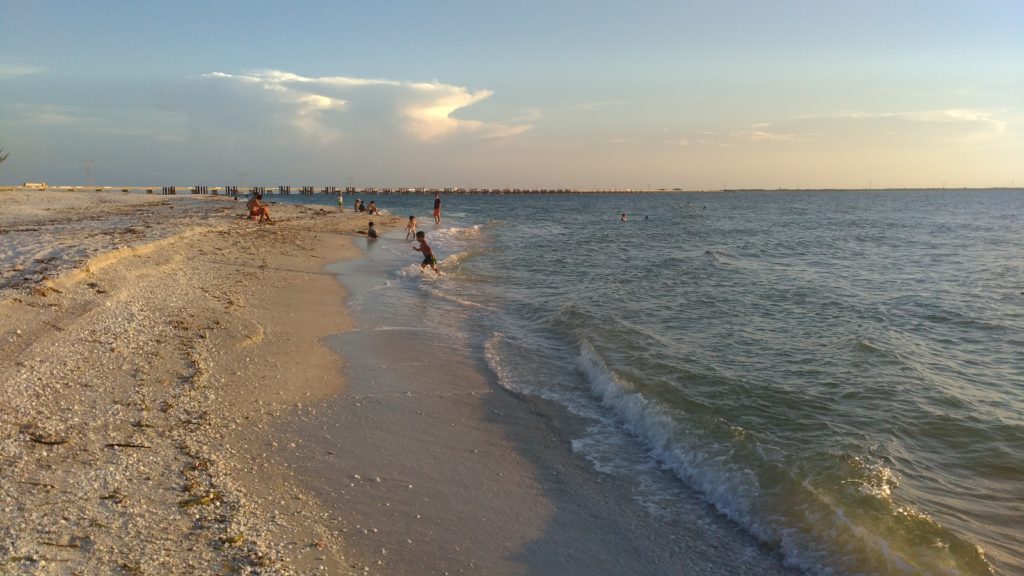
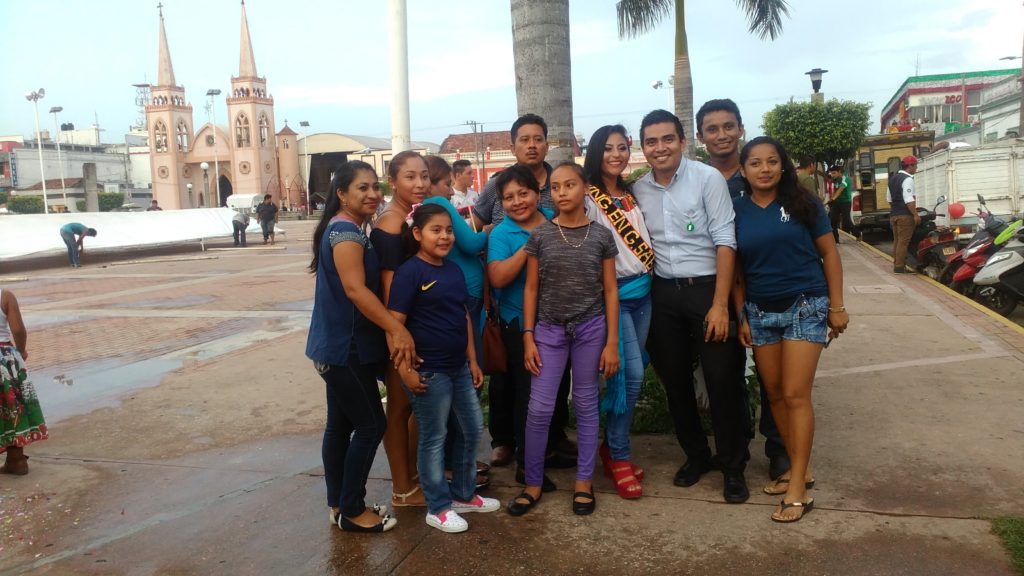
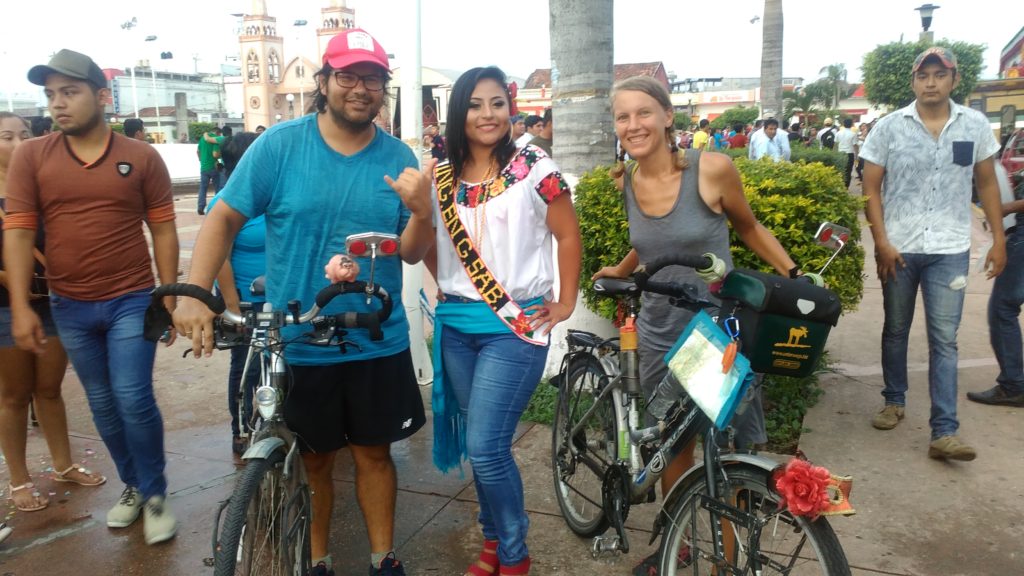
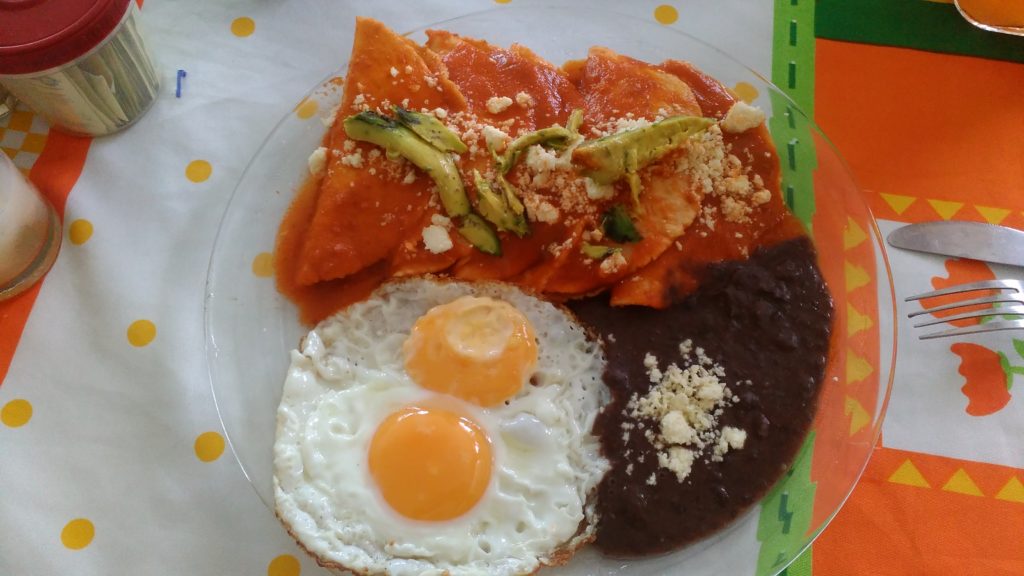
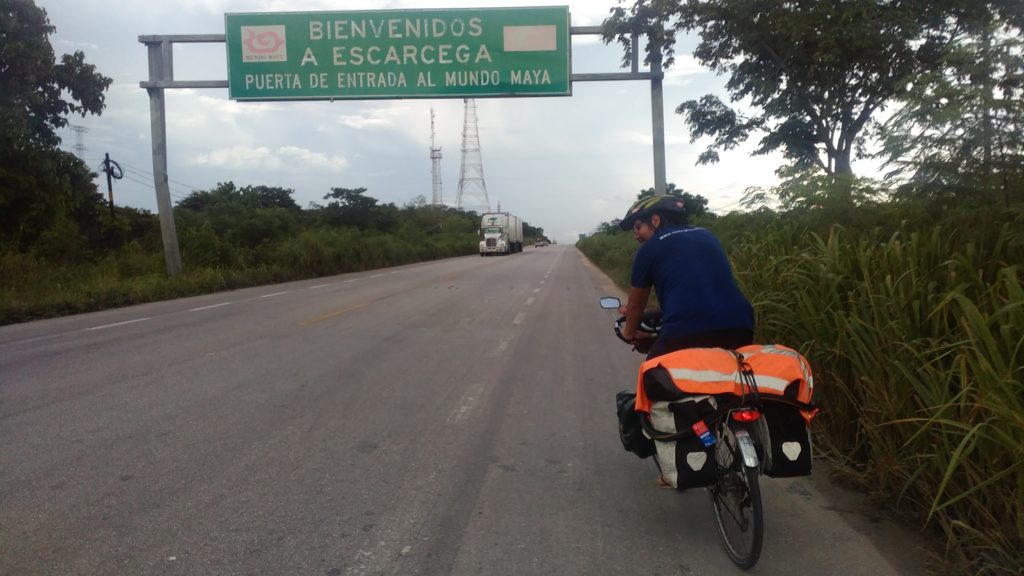





Pingback: Der heiße Süden Mexikos – Tabasco und Campeche mit dem Rad - Tasting Travels
Pingback: Maya ruins and rain forest – Yucatán by bike - Tasting Travels